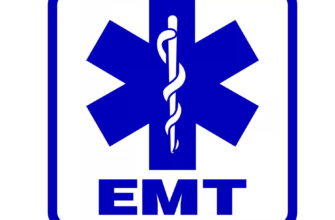Advanced Emergency Medical Technicians are EMTs that have undergone training in limited advanced life support practices. Before you decide on advancing to this level, contact your local EMS Agency, as many agencies are now phasing out AEMT programs in favor of paramadic programs. If you are looking for Paramedic specific information then take a look at Paramedic Training in CA
The following is a list of requirements you will need to satisfy prior to becoming a licensed Advanced EMT (AEMT) in the State of California:
- 18 years of age
- Criminal background check, criminal records may result in rejection; if yo uhave a criminal record it’s best to contact your local EMS Agency before you invest time and money
- AEMT Training Certificate
- CPR Card
- NREMT certification
- High School diploma or equivalent
- Valid drivers license not a requisite for an EMT license but may be required for better job prospects
Step 1
Find a local approved training facility and register for the AEMT training. The minimum training duration is 88 hours, divided into 48 hours classroom, 16 hours clinical internship and 24 hours field internship, but many training programs exceed this minimum requirement.
Prior to contacting the training facility you should get proof of immunization and verify with the training facility what other immunizations you will need prior to registering.
It is very important that you only register for an approved training program at a state approved facility. It is also recommended that you check that your training completion date does not fall after an approval expiry date of the training facility. In the below link for approved training facilities the expiry date of each provider is indicated in the table.
Step 2
A lot of approved training facilities also offer CPR certification and refresher courses. If an applicant already has a CPR card, they should make sure that it is still valid. It would make sense for an applicant to choose a training facility that does offer both the AEMT and CPR training courses. Applicants should also talk to the training provider about the National Registry of Emergency Medical Technicians (NREMT) psychomotor examination and whether they will be able to provide such a certificate (see next step).
Upon completion you will receive a certificate that is needed for the state AEMT license application.
Step 3
AEMT license applicants must pass the NREMT exams, which are made up of two parts, a written cognitive exam and a psychomotor exam. For the written exam an applicant will need to register with the NREMT (http://www.nremt.org) and pay the $100 application fee. When the applicant is ready to take the exam they will need to get in touch with Pearson Vue (http://www.vue.com) who provide the computer based testing for the NREMT exam.
For the psychomotor examination you should check with your EMT training provider whether they are able to provide such certification in conjunction with the AEMT course. Note that this exam tests the applicant for ten separate skills.
Once the applicant has received certification for both exams they will be issued with an NREMT certificate which is valid for 2 years; this certificate is needed for the state EMT license application
For some tips and recommendations on preparing for these exams take a look at our Preparing For NREMT Exams page.
Step 4
AEMT Applicants must submit fingerprints eletronically for a criminal background check using the Live Scan Service. Only forms received from a local EMS Agency should be used; a list of EMS agencies can be found here: http://www.emsa.ca.gov/local/default.asp
Note that a fee of $51 must be paid at the Live Scan site.
Step 5
In order to submit an application an applicant must do the following:
- Complete the local EMS Agency’s AEMT application form (find local agencies here: http://www.emsa.ca.gov/local/default.asp)
- Include certificate of AEMT course
- Include documentation of passing NREMT exams
- Include proof of CPR course completion
- Include proof of Live Scan including ATI number
- Include copy of valid legal photo ID
- Include payment of initial certification fee of $155 (check or money order)
Knowing all these steps in advance will greatly help in planning your training and ensuring a quick and efficient process as possible.
EMT Training FAQs
Welcome to the Advanced EMT Training FAQs! We are thrilled that you are considering pursuing a career in the exciting field of emergency medical services (EMS). We understand that deciding to become an Advanced EMT can be a significant and life-changing decision. That’s why we have created this comprehensive FAQ guide to provide you with all the information you need to know before enrolling in an Advanced EMT program in California. So, let’s dive in!






